Scientists observing the Manatee Nebula find that the supernova remnant contains a stellar-mass black hole that is emitting powerful, high-energy jets, creating the strange, double-lobed shape. Plus, rocket launches, mission updates from Mars and the Moon, and a spinning galaxy from the early universe.
Podcast
Show Notes
Last Atlas V 541 launches two satellites into GEO
Virgin Orbit conducts its 4th successful mission
- PDF: Straight Up press kit (Virgin Orbit)
- Virgin Orbit rocket launches 7 US defense satellites (AP News)
Robots roll over Italian volcano for science
- DLR press release
Spinning galaxy in the early universe
- NAOJ press release
- “Possible Systematic Rotation in the Mature Stellar Population of a z = 9.1 Galaxy,” Tsuyoshi Tokuoka et al., 2022 July 1, The Astrophysical Journal Letters
A manatee with a particle accelerator on its head
- ESA press release
- “Hard X-ray emission from the eastern jet of SS 433 powering the W50 ‘Manatee’ nebula: Evidence for particle re-acceleration,” Samar Safi-Harb et al., accepted to The Astrophysical Journal (preprint)
New evidence: Merging neutron stars make magnetars
- The Case is Building That Colliding Neutron Stars Create Magnetars (Universe Today)
- “A hyper flare of a weeks-old magnetar born from a binary-neutron-star merger,” B.-B. Zhang et al., under peer review (preprint)
China’s Mars mission completes original objectives
VIPER mission prepares for the Moon
- JHU press release
CAPSTONE headed to the Moon
- Rocket Lab press release
- NASA satellite breaks from orbit around Earth, heads to moon (AP News)
- CAPSTONE Update on Communications Issue (NASA)
Transcript
Pamela, what is all this about space manatees?
Manatee with a particle accelerator on its head! It’s pretty cool, and I will explain!
Huh. Well, I’ve got launches and rover testing.
I have some rover testing as well. Plus a very old, very distant spinning galaxy.
That sounds neat. And I have an update on CAPSTONE.
All that and more, right here on the Daily Space.
I am your host Dr. Pamela Gay.
I am your host Erik Madaus.
And we’re here to put science in your brain.

On July 1 at 23:15 UTC, a United Launch Alliance Atlas V 541 launched the USSF-12 mission into geostationary orbit. The powerful 541 variant, with four solid rocket boosters and one engine on the Centaur upper stage, was used to directly insert the mission’s two payloads into geostationary orbit 35,000 kilometers above the Earth’s surface.
Atlas V can fly with up to five solid rocket boosters, depending on the satellite and the planned orbit. This launch will be the last flight of this particular Atlas V variant as it will be phased out for the upcoming Vulcan Centaur rocket.
Like a regular USSF mission, the press kit only talked about the payloads in general terms with no specifics. The main payload on USSF-12 is the Wide Field Of View testbed, which will be operational for between three and five years and be used to test new sensors for future infrared missile tracking satellites. The Wide Field Of View sensor on the satellite has a six-degree field of view.
The other satellite on the mission was designated USSF-12 Ring, and the United Launch Alliance press release simply called it “a classified mission to demonstrate future technology for the Department of Defense.”
The launch was delayed for several months from earlier in 2022, first to (probably) get the Boeing OFT-2 mission completed sooner rather than later and then 24 hours after the first attempt on June 30 because of weather. The latter delay was caused by thunderstorms on a Florida summer afternoon, so not too surprising. The Atlas V eventually lifted off an hour into its second attempt, and both payloads were successfully deployed in orbit six hours later.

The next day, on July 2, another delayed mission launched to orbit. Virgin Orbit’s Straight Up mission was supposed to launch on June 30 as well but was delayed because of propellant temperature issues. That’s one of the downsides you get with a mobile launch system – it’s more difficult to condition liquid propellant after the plane takes off. Having propellant too warm or too cold can cause problems when entering the rocket engine, so the mission team made the best decision to take the time and make sure everything was right.
Straight Up, or STP-S28A as it was called by its customer the U.S. Space Force, was a collection of seven CubeSats for various government agencies but also one private company. These CubeSats had such fanciful backronyms as Gunsmoke-L, NACHOS 2, and Slingshot 1. Those satellites are for the U.S. Army, Los Alamos National Lab, and The Aerospace Corporation, respectively.
An hour before the drop, the Cosmic Girl 747 launch platform took off from the Mojave Air and Space Port in California and headed over the Pacific Ocean. Once in the drop zone, the team conducted one final poll and then dropped the rocket, which headed off into space. One burn of the upper stage took it into a parking orbit. An hour later, the second stage relit its Newton-3 engine and placed the seven satellites into their target orbit, which was a 500-kilometer circular orbit inclined 45 degrees to the equator. That particular orbit is not usually reachable from the west coast but can be with the air-launched system that Virgin Orbit uses.
We’ll have more news about current lunar exploration in a bit, but now a story from ESA on what future lunar rovers could do.
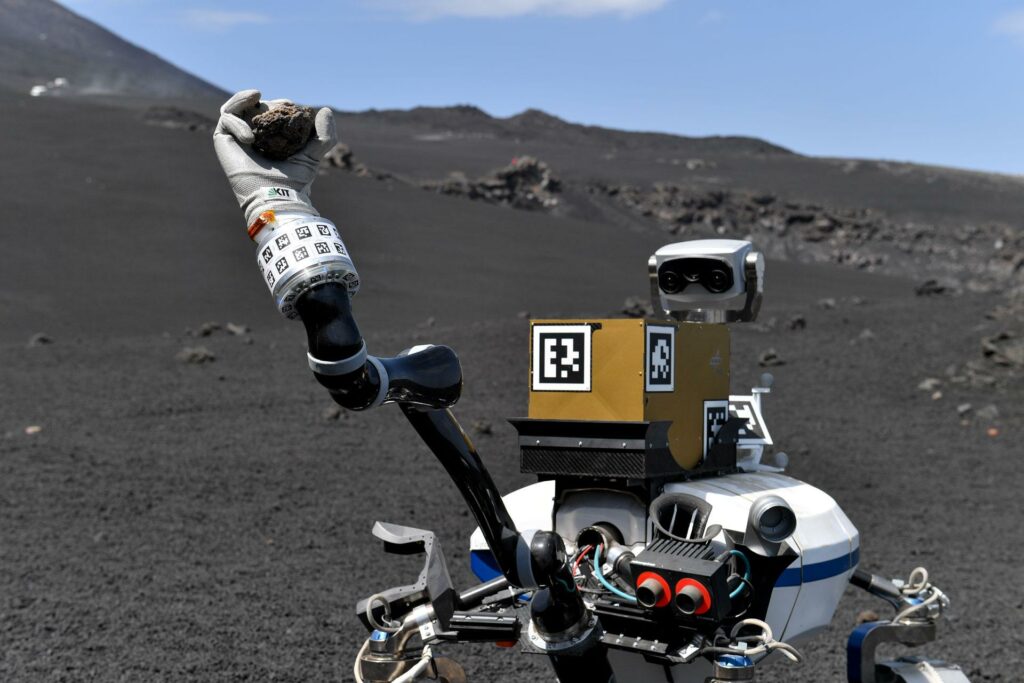
The Autonomous Robotic Networks to Help Modern Societies (ARCHES) from the DLR, the German space agency, aims to develop robots that can do their tasks autonomously to support or replace human astronauts in dangerous situations. A collection of five robots – four driving and one flying – completed three scenarios on Italy’s Mt. Etna, a volcano that vaguely resembles the lunar surface.
The robot team consisted of a “scientist” that was equipped with a laser spectrometer, used to identify the rock samples by hitting them with a laser. Another robot, which the team called the “assistant”, brought samples to the “scientist” robot and also stored tools. A third robot was designated “scout” and acted as a wireless access point to keep both robots in contact with each other and the ground at all times, in addition to scouting ahead.
One scenario mimicked the current exploration paradigm, where the robots are monitored from Earth as they do programmed tasks. The second scenario involved more direct human involvement, simulating a human controlling the robots from a station in orbit of the planet. The third scenario was completely different, involving robots assembling a radio antenna. Such an antenna is planned for a future human base on the lunar far side.
The fourth driving robot was used by itself in a completely separate scenario; it had a remote manipulator with the ability to provide haptic feedback to a human user. This technique helps with identifying rock samples. The team also used a drone to monitor the robots but was not actively part of the demonstrations.
Coming up next, galaxies misbehaving and cosmic manatees. You heard that right. Cosmic. Manatees.

At 10:30 am Eastern on Tuesday, July 12, we are going to get to see the first multi-color, fully processed science images from the JWST. We will be hosting a watch party for the event on Twitch.tv/CosmoQuestX. But in these last pre-JWST days, we continue to celebrate the science folks figured out how to do without the JWST using all manner of creativity. Our favorite method remains gravitational lensing: a technique that allows astronomers to study the most distant galaxies using light that is gravitationally bent our way by massive galaxy clusters that act like magnifying glasses – very, very imperfect magnifying glasses.
In 2012, a tiny galaxy was found magnified by the gravity of the cluster MACS J1149+223. With its light shining toward us from just 500 million years after the Big Bang, this newly imaged system showed us stars that likely started forming just 200 million years after the Big Bang.
Now, follow-up observations using the Atacama Large Millimeter/submillimeter Array (ALMA) and published in The Astrophysical Journal by a team led by Tsuyoshi Tokuoka, show that this little system – cataloged as MACS1149-JD1 – has a mass of about 1 million Suns, is 3,000 light-years across and is rotating about 50 kilometers per second. This small system is basically doing a small spin and showing us just how galaxies form, grow, and spin up over the eons.
Like so many other research teams, this one points out that JWST will be able to observe just how typical this galaxy is and fill in the missing pieces in our understanding as it directly observes – no gravitational lensing required – the first galaxies forming.
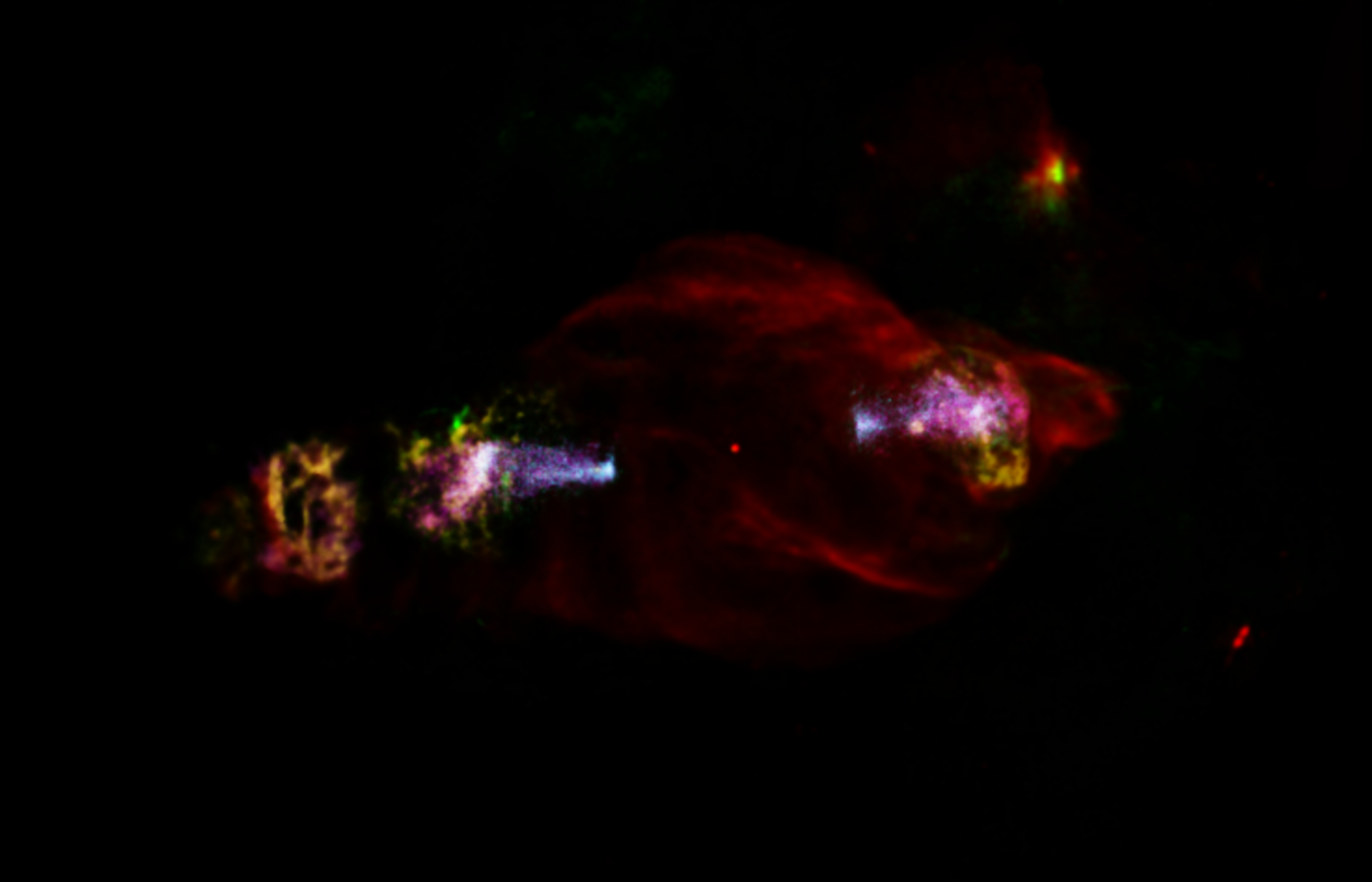
As we look out across the universe, we see all manner of objects forming, evolving, dying, and taking on new shapes and activities in their afterlife — or is it better to say undead years? I’m not sure where to take this analogy. All I know is stars die, leave behind nebulae with complex physics, and sometimes even compact objects that can be stellar vampires.
One star, in its death, expelled mass and shocked surrounding material in just the right way to form a nebula some folks see as a manatee. To one side is a yellow bulbous head, to the other is a massive red body and red tail, and if you use your imagination, it does look a bit like a modern art rendition of a manatee seen swimming from straight above. Cataloged as W50, this system was formed about 30,000 years ago and contains one of these tiny vampires – a probable stellar-mass black hole with a tiny accretion disk of material it is eating. That black hole is forming a tiny jet that is accelerating particles and releasing high-energy light.
According to Samar Safi-Harb, who led this study: Thanks to the new XMM-Newton data, supplemented with NuSTAR and Chandra data, we believe the particles are getting accelerated to very high energies in the head of the Manatee through an unusually energetic particle acceleration process.
Put another way, there is a space manatee with a head several 100 light-years across that contains a particle accelerator. I feel like there should be an Austin Powers joke in here somewhere, but carrying on with the science, this object can be readily seen in X-ray, gamma-ray, and normal light, and I expect future information and future “manatee with a particle accelerator on its head” headlines coming to journals near you.
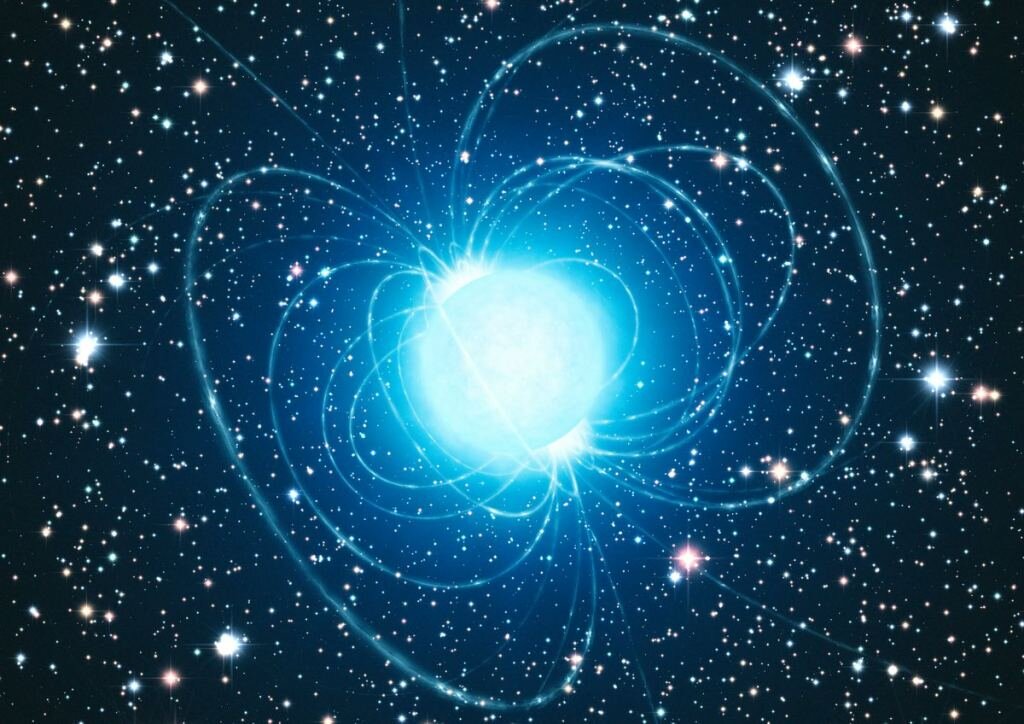
The life and times of dead stars are often far more exciting than the life and times of living stars. While alive, stars hum along, fusing together atoms in their increasingly complex cores and generating light and energy like the nuclear power plants they are. When those nuclear reactions end, light is no longer able to push out and support the star from gravitational collapse, and depending on the mass of the original object, this collapse can lead to anything from a white dwarf to a black hole to massive nebulae marking where no stellar remnant was left behind at all.
Trying to understand how we get all the varied dead stars we see out there has been a challenge, and one of the most curious of these remnants has been the magnetar. These large neutron stars have massive magnetic fields and also demonstrate the flashing behavior of rotating pulsars. They are rare, and to have something be rare but made out of a fairly common object implies that magnetars are either a very short-lived stage in a neutron star’s life or they are neutron stars formed in a very special way, and a new paper posted to ArXiv hints at the latter being the case.
A team led by B.-B. Zhang reviewed the locations of the short gamma-ray bursts looking for evidence that these bursts coincided with the locations of magnetars. They theorized that when two neutron stars merge and release gamma rays and gravitational waves and just about every other wave except sound waves, they theorized that these mergers can create magnetars. And they found a very young magnetar at the location of a gamma-ray burst known as 130310A.
This is just one observation, but it is a start. This isn’t to say this is the only mechanism, but it is looking like this is a mechanism. And it is a mechanism that predicts that, with further work, more of these young magnetars can be found.
This work hasn’t gone through peer review, yet, and I appreciate the clear-cut “we looked at this, we saw this” post that now opens the field for others to pursue, and hopefully confirm, this idea.
And now, we turn from distant, dead stars to missions to other worlds in our solar system.

Last week, the China National Space Administration (CNSA) announced that their Martian orbiter and rover, Tianwen-1 and Zhurong, have both completed their “targeted scientific exploration missions.” That’s pretty impressive for a country’s first mission to a distant world, but we’ve already seen the amazing work China has been doing on the Moon, so it’s not all that surprising.
To honor the occasion, China sent out a press release detailing the accomplishments of Tianwen-1. The orbiter itself has been operating nominally for 706 days, and in that time, has acquired medium-resolution data covering the entirety of the red planet. The orbiter has circled Mars, per the press release, 1,344 times.
As for Zhurong, the rover touched down on May 15, 2021, in Utopia Planitia and began roving on May 22. It completed its initial 90-day mission on August 15 and has since continued exploring the surface. So far, the rover has traveled almost 2,000 meters. In May of this year, the rover switched to ‘dormant mode’ because of the approaching Martian winter. Operations are expected to resume in December when the weather warms up again.
Between the orbiter and the rover, over 1,000 gigabytes of data have been acquired using thirteen scientific payloads between the two craft. And the CNSA has shared that data with both NASA and the European Space Agency while also participating in collision forecasts to make sure everyone’s spacecraft stay safe in orbit. CNSA also plans to make the scientific data available to scientists worldwide.
Next for Tianwen-1 will be a whole-planet remote sensing survey as well as some expanded technology experiments.
We look forward to bringing you more results from this mission.
From a mission already working at its destination, we now turn to a mission currently being assembled and prepared.
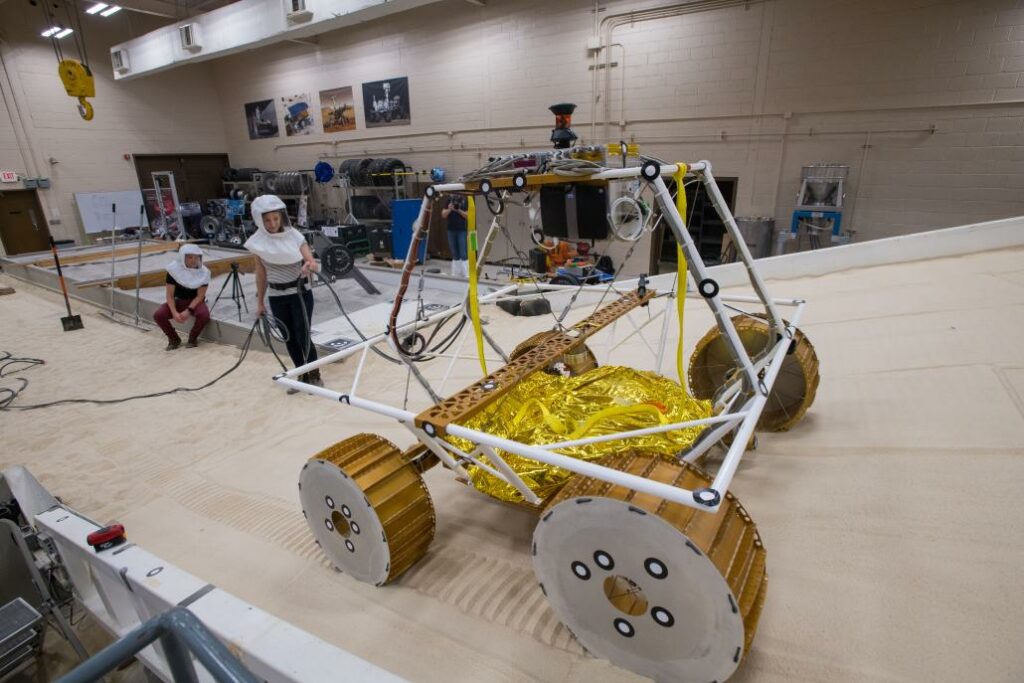
The Volatiles Investigating Polar Exploration Rover, VIPER, is being assembled and tested at NASA’s Johnson Space Center. With a planned launch and lunar landing expected in the fall of 2023, the golf-cart-sized rover is being put through its paces and customized for the specific conditions of the lunar south pole.
VIPER is part of NASA’s Artemis program, specifically designed to assist in the planning of a lunar base. In order to host humans, one of the biggest challenges is finding in situ resources. Supplies like water and building materials are heavy, and more weight equals more fuel needed for launch. So if astronauts can use water and regolith and rock already on the Moon, that’s more room for scientific equipment and fewer trips to get all those supplies up there. VIPER is being sent to assess the water ice supplies at the south pole of the Moon, where shadowed craters have been found that have ice. The questions remain of how much and how deep, though.
Challenges facing VIPER and its engineers include the darkness of the lunar south pole. VIPER will need headlights – a first for a rover. That darkness also means that the rover will have to navigate in and out of the craters in order to recharge the batteries using sunlight. And that sunlight will be coming in from a steep angle, so the usual rooftop solar arrays will have to be mounted on the sides of the rover.
On top of all of that, those climbs in and out of craters mean that VIPER requires “four independently controlled wheels that can handle slopes of 25 to 30 degrees.” Wow.
Good luck to the design team. We’ll keep you posted on launch dates as we learn them.
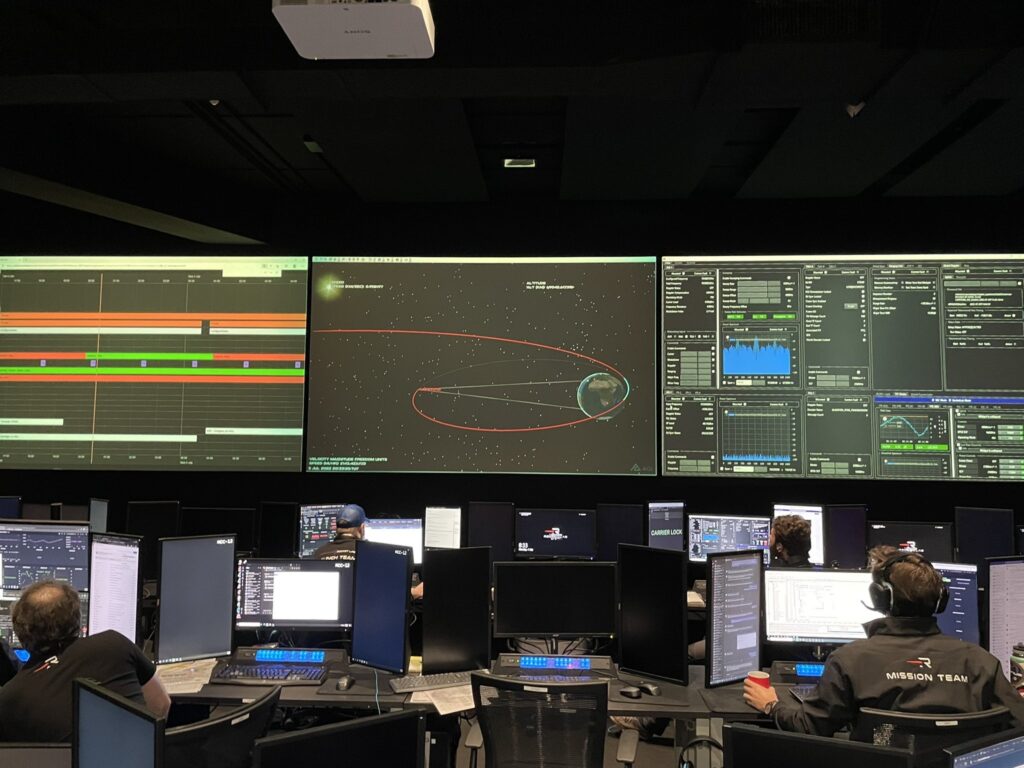
To wrap up our mission updates, we present an update on the launch phase of NASA’s CAPSTONE CubeSat to the Moon.
At 07:18 UTC on July 4, the Lunar Photon upper stage released the CubeSat into a ballistic capture trajectory. Between June 28 and July 4, the stage conducted seven burns to put the spacecraft in this orbit. CAPSTONE set many milestones for both Rocket Lab and NASA. The launch was Rocket Lab’s 27th and their first mission to deep space, defined as 150,000 kilometers from Earth according to Jonathan McDowell, astronomer and Twitter Orbital Police.
CAPSTONE was also the heaviest payload launched into orbit by an Electron rocket at 300 kilograms, including the Lunar Photon and CAPSTONE spacecraft.
In one strange but interesting milestone, the Electron’s second stage re-entered the Earth’s atmosphere after only one day, which was probably a result of the very low insertion orbit of about 150 kilometers.
We’ll have further updates about CAPSTONE as the mission progresses, but the initial word is it is not doing well. On July 5, NASA announced the spacecraft experienced a “communications issue” that NASA is still working to understand. The spacecraft can still perform its mission because it has enough fuel to do its first trajectory correction maneuver several days later than planned. That is if they regain contact with it.
This has been the Daily Space.
You can find more information on all our stories, including images, at DailySpace.org. As always, we’re here thanks to the donations of people like you. If you like our content, please consider joining our Patreon at Patreon.com/CosmoQuestX.
Credits
Written by Pamela Gay, Beth Johnson, Erik Madaus, and Gordon Dewis
Hosted by Pamela Gay, Beth Johnson, and Erik Madaus
Audio and Video Editing by Ally Pelphrey
Content Editing by Beth Johnson
Intro and Outro music by Kevin MacLeod, https://incompetech.com/music/


 We record most shows live, on Twitch. Follow us today to get alerts when we go live.
We record most shows live, on Twitch. Follow us today to get alerts when we go live.